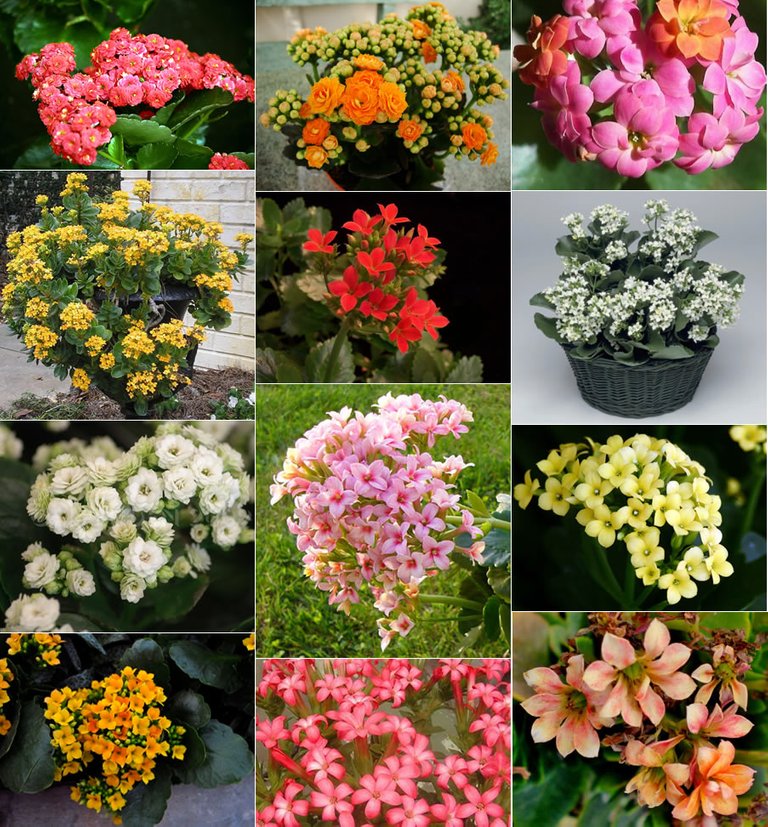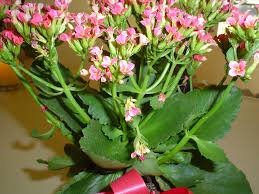Extremely Amazing Facts About Kalanchoe Plants...
Kalanchoes are succulents that are very popular as houseplants...
 @ctrl-alt-nwo sir...
@ctrl-alt-nwo sir...
Kalanchoe plants belong to the family Crassulaceae and genus Kalanchoe that consists of around 125 species. These tropical flowering plants are natives to Madagascar, but a few species are found in Brazil and some parts of Asia. Most of these plants grow to a height of around one meter. However, some species grow like trees, with a height of about six meters. The name 'Kalanchoe' is believed to be Chinese in origin. These plants are very popular as ornamental houseplants, due to low maintenance, colorful flowers, and low water requirements....
.jpeg)
Even though the appearance of individual kalanchoe species may vary, in general, these plants have some common features. Most kalanchoe plants have large, thick, and succulent leaves, and numerous stems. These plants develop brilliantly colored flowers, that are produced in terminal clusters. There are many varieties that produce flowers in different colors. The most common among them are red, pink, yellow, orange and white. These plants bloom during late fall and last till late winter. Some of them may produce flowers throughout the year. A characteristic feature of kalanchoes is the growth of new cells on the inner sides of the petals, so as to force open the flowers. Such cells are also found on the outer surfaces of the petals, to aid closure of the flowers.
.jpeg)
Kalanchoe blossfeldiana is the most popular and commonly found houseplant among the kalanchoe species. Other popular species include Kalanchoe manginii, Kalanchoe beharensis, Kalanchoe pinnata and Kalanchoe porphyrocalyx. Kalanchoe plant propagation may vary with the species. While some species are propagated through stem cuttings, others develop plantlets along the leaf margins. In some other species, offsets that develop from the mother plant are used...
How to Care for Kalanchoe Plants...
As mentioned above, these plants require very less maintenance, and this is one of the reasons for their growing popularity. They need well-drained soil and bright light for a healthy growth. Kalanchoes may not withstand long exposure to cold conditions. If you want to grow them in pots, use clay pots with good drainage. They need water for survival, but over watering may harm the plants. So, water kalanchoes, only when the soil gets dry. Use a houseplant fertilizer in very small amounts, during the growing season, i.e, from March through October. During hot climates, avoid direct sunlight, which can be harmful for these plants. Pruning involves removal of dead leaves and flowers. This encourages new growths. Compared to those planted outdoors, pest attacks and diseases are rare in indoor kalanchoes. If they develop such problems, try to use non-toxic insecticides, because chemicals can cause harm to these plants.

However, some species of kalanchoes are said to be toxic for cats. If you have cats in your house, you can prevent them from chewing kalanchoe leaves by sprinkling cayenne pepper over the plant. The severity of toxicity depends on the amount of leaves ingested. So, if you are interested in growing kalanchoes, get some from the nearest local nursery, and enjoy their vibrant blooms....
@ctrl-alt-nwo sir Thanks for sharing this amazing post...